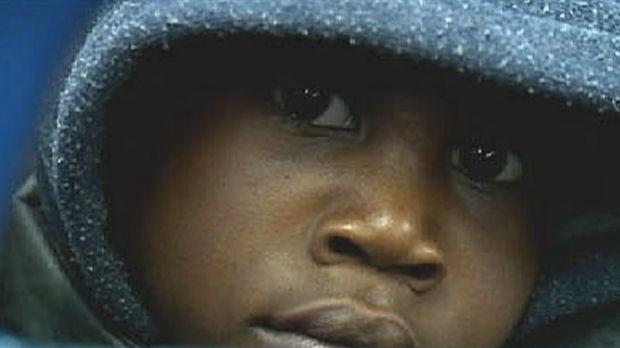Children suffer as US home-owning dream fades
 Matt Frei
Europe Editor and Presenter
Matt Frei
Europe Editor and Presenter
US child homelessness is highest in the capital, Washington DC, but as Matt Frei reports, some families are showing remarkable resilience in the face of hardship.

One out of every 45 children in the US is now homeless. A recent report has found there are some 1.6 million American children without a home – more than ever before.
Experts are blaming the so-called foreclosure crisis for the huge rise in the number of families who have found themselves homeless there.
Millions of Americans have had their homes repossessed since the credit crisis in 2007, and the number of homeless children has risen by 33 percent since then. And the highest rate of homelessness is right at the heart of US government in the capital city.
Misfortune meets decline
Every day George Harris and his four-year-old son Nicholas embark on a lengthy commute to his school: three buses and more than an hour. But the tough part is not the journey, it is the point of departure. It keeps changing.
That is because this father and son have lived in two different homeless shelters in the last eight months. George had a series of low-paid manual jobs in catering until a heart attack six years ago put him out of work. Then his partner, Nicholas’s mother and the only breadwinner in the family, left them for another man.
It is a case of personal misfortune meets general decline. With more than 1.6 million American children homeless, their story is no longer unusual.
George was determined to keep custody of Nicholas. But living on $800 a month disability allowance – about £500 – is impossible in a city where the average rent of a one-bedroom flat is more than twice as high.
Their latest home is officially called a “transitional shelter”: two small bedrooms and a bathroom. Luxury compared to the dormitories of the last shelter. But the place is spartan and the rules are strict – 11pm curfew, no visitors except for a few hours at weekends. And it has privacy, a last vestige of dignity for a man and his boy who have very little.
Houses repossessed
The number of homeless families in Washington has risen by 10 per cent in one year. Ironically, there are plenty of empty houses but the owners have long gone, often unable to pay the mortgage, and the houses have been repossessed by decay.
Community of Hope is a transitional shelter set up specifically for homeless families. College students volunteer for after-school tuition. Washington’s poverty rates are nearly twice the national average, and the city has the highest rate of child poverty in the nation. Three out of 10 children in this city are living at or below the poverty line.
April Dunston is about to start a new job in a youth centre, a job she got with help from Community of Hope. She and her 12-year-old son Joshua have lived here for just over a month, after being in an emergency shelter for almost a year. Their descent into homelessness was as rapid as it was typical.
Joshua conceals his homeless existence from his friends like a stain of shame. He wants to be a truck driver or a firefighter when he grows up.
Homeless generation
But the people who work with kids like him worry about a whole generation growing up without a home – and without hope of a better life. The authorities think about 99 percent of the homeless population here is African American.
The economic reality is conspiring to make everything worse: rents are rising, more and more homes are being repossessed, and charities like Community of Hope are funds cut in a time of virtual recession.
Back at the transitional shelter, George shows remarkable resilience, and as so often here, he believes responsibility for a better life rests on his own shoulders.
Homelessness is nothing new in the shadow of Capitol Hill. A city built as a showpiece of America’s achievements has long been a reminder of its worst shortcomings.
But in the current economic climate the face of homelessness is changing and getting decidedly younger. Entire families, mostly hidden from view, gnawing at the self esteem of a country where owning a home was a part of everyone’s dream.